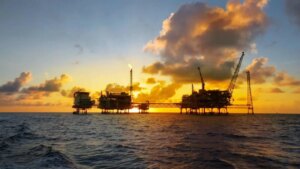The International Energy Agency has intensified its calls for dramatic action to cap greenhouse emissions, and has unveiled a four-point plan that could cut energy industry emissions by more than 3 billion tonnes of CO2-e by 2020 – at no net economic cost.
IEA executive director Maria van der Hoeven said the initiatives were essential – and should be implemented immediately – if the world was to try to keep global temperatures from rising more than 2°C.
At current rates, the world is heading towards a rise of up to 5.3°C, and even with current policies would emit 4 billion tonnes of CO2 above its “budget” to meet the 2°C target by 2020. It said its proposed measures – which could knock around three-quarters off this increase – were needed to provide “precious time” for the world to gain concrete agreement in international climate talks.
The four key measures – dubbed the 4-for-2°C scenario, and using proven and feasible technologies that the IEA says will not harm economic growth – focus on energy efficiency in buildings, homes and transport; cutting fossil fuel subsidies; getting the oil and gas industry to reduce methane emissions; and preventing the construction of the least efficient coal-fired generators.
Van der Hoeven said the recent milestone of 400 parts per million in greenhouse gas emissions in the atmosphere was “symbolic” of the world’s failure to respond adequately to climate change and to fulfill national and international pledges.
“If we continue with business as usual, that rise could be 5.3 degrees Celsius, with potentially disastrous implications in terms of extreme weather events, rising sea levels, and the huge economic and social costs that these can bring,” she said. “In short, we are drifting off track, and global negotiations are not expected to yield agreement before 2015, and to be enforced after 2020.”
She said delay could save the energy sector $US1.5 trillion in avoided low-carbon investments before 2020, but it would then have to spend $US5 trillion to get the world back on track. “The question is not whether we can afford the necessary investments given the current economic climate. The fact is we simply cannot afford to delay,” van der Hoeven said.
As this graph above shows, the IEA says around half the emissions savings (the equivalent of Russia’s annual output) can be achieved by being more efficient. This would require energy performance standards in buildings for lighting, new appliances, for new heating and cooling equipment, and for motor systems in industry and road vehicles.
Most of these savings would come from the buildings sector, including more efficient lighting and appliances. They are also the cheapest, requiring investment of up to $200 billion by 2020 – a cost that would be more than offset by reduced spending on fuel bills.
The IEA is targeting the use of inefficient industrial motors in China and India, and inefficient lighting and heating in both developed and undeveloped countries. It notes that the result of this may result in an increase in household expenses of more than 1 per cent in OECD countries for transport services and equipment, and also for manufactured products. But this would deliver savings in energy expenses of between 2 per cent and 4 per cent, which would result in a marginal net increase to households.
The second biggest item is limiting the use of inefficient coal plants. The IEA wants the construction of all new “sub critical” plants banned, and others to be phased out. It says this can be done through emissions and air pollution standards and carbon prices. It is targeting China, India and the US here for the biggest savings. (It also repeats its assertion that most of the world’s thermal coal reserves need to stay in the ground – a measure that implicitly targets Australia’s huge expansion ambitions.)
The fossil fuel subsidies are mostly targeted in areas such as the Middle East and Africa. The IEA estimates that fossil fuel subsidies – which totalled $523 billion in 2011, six times the subsidies for renewables – were equivalent to an incentive of $110/tonne of CO2. Only 8 per cent of the world’s fossil fuel emissions were subject to a carbon price, and the current value of the world’s largest carbon market, the EU emissions trading scheme, is around $5/t.
The reduction in the release of methane gas (a particularly potent greenhouse gas), also targets the Middle East, Russia, the US and Africa. It says 1.1GT of CO2-e was released in 2010 alone, from upstream oil and gas installations, through flaring, venting and leakage. The technology to stop this is available and inexpensive – the oil and gas industry simply has to be required to adopt it.







